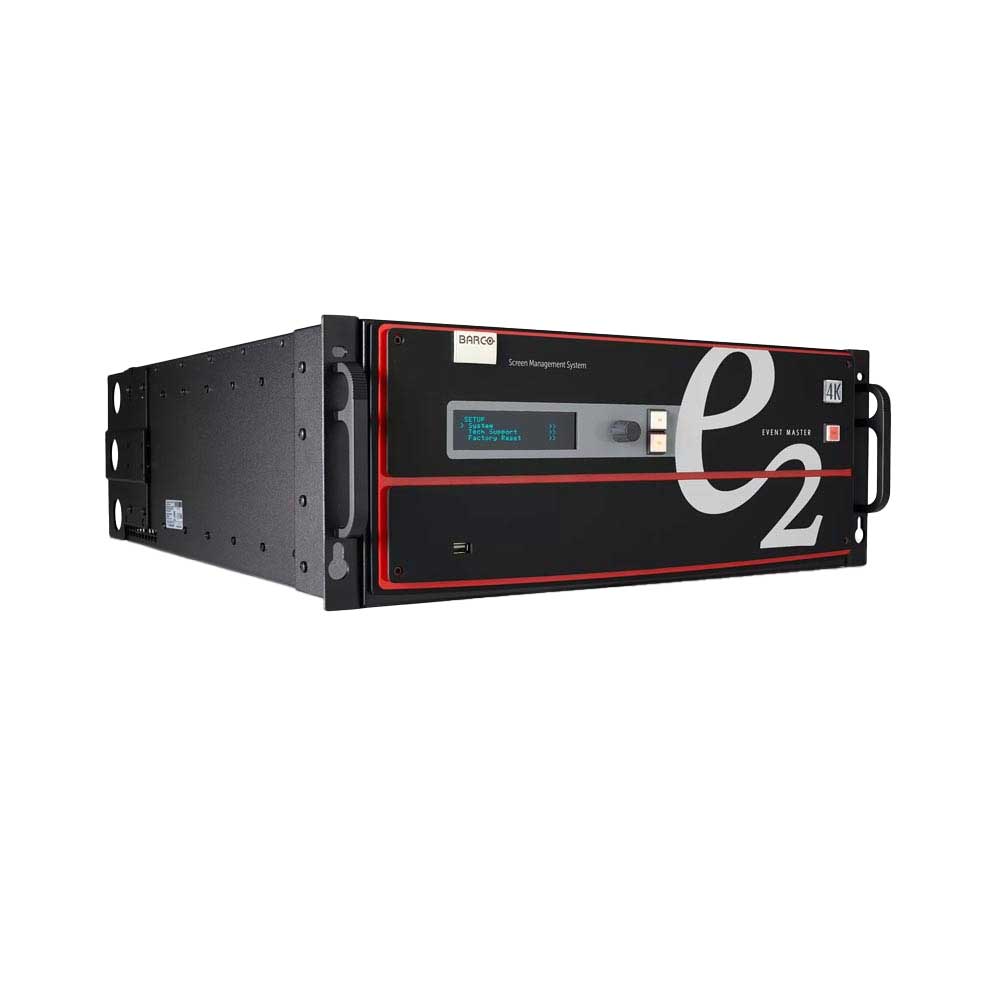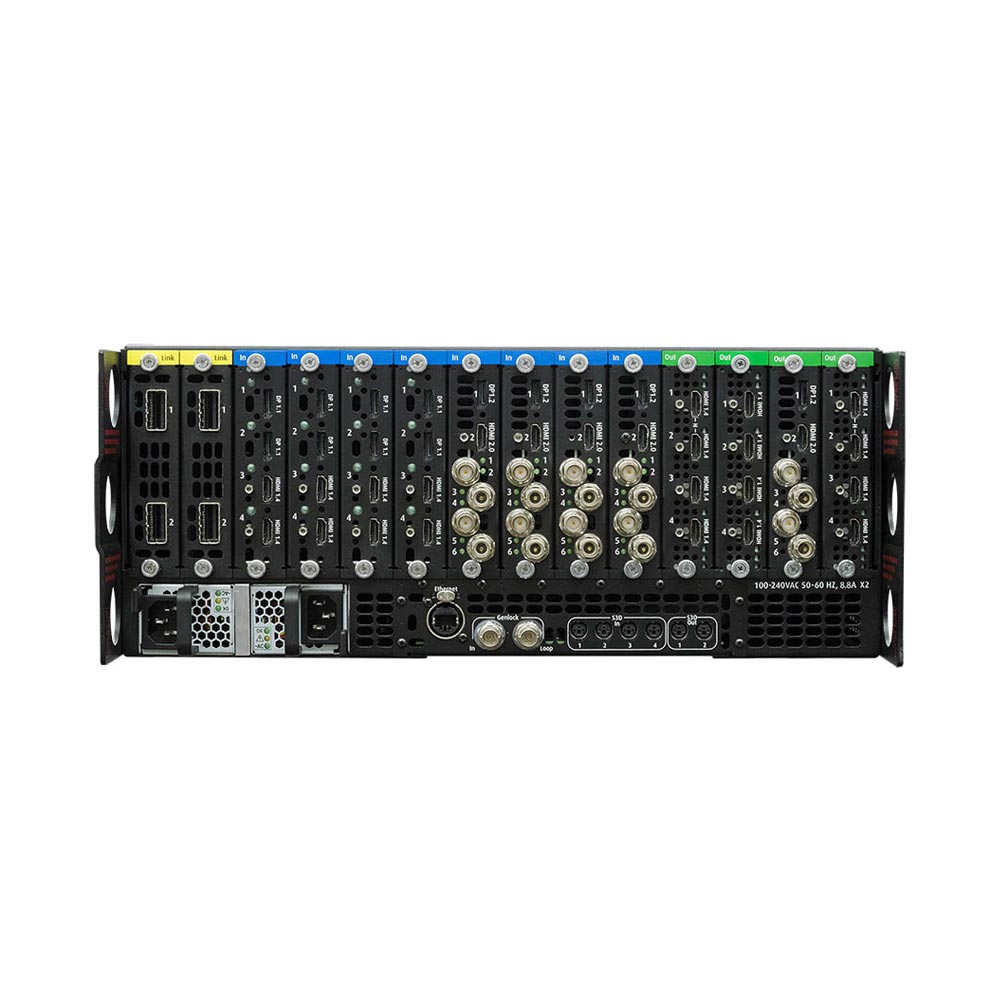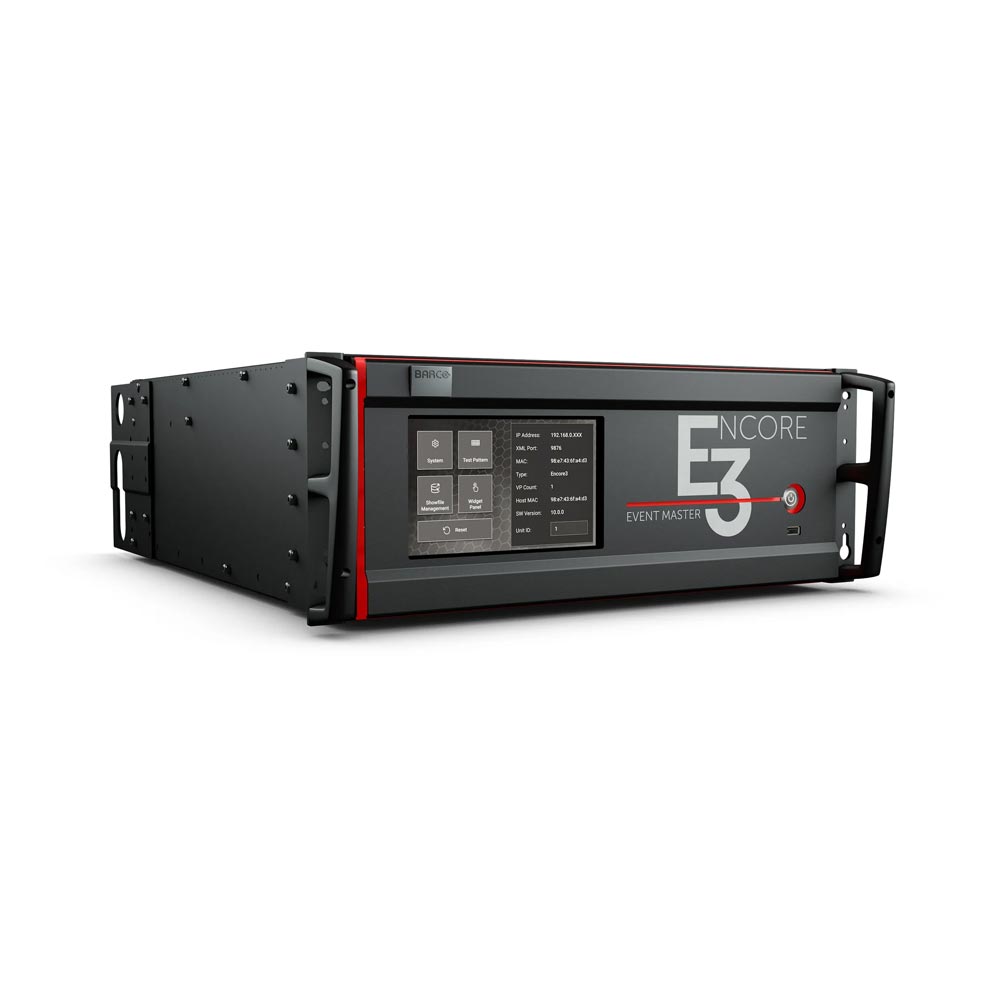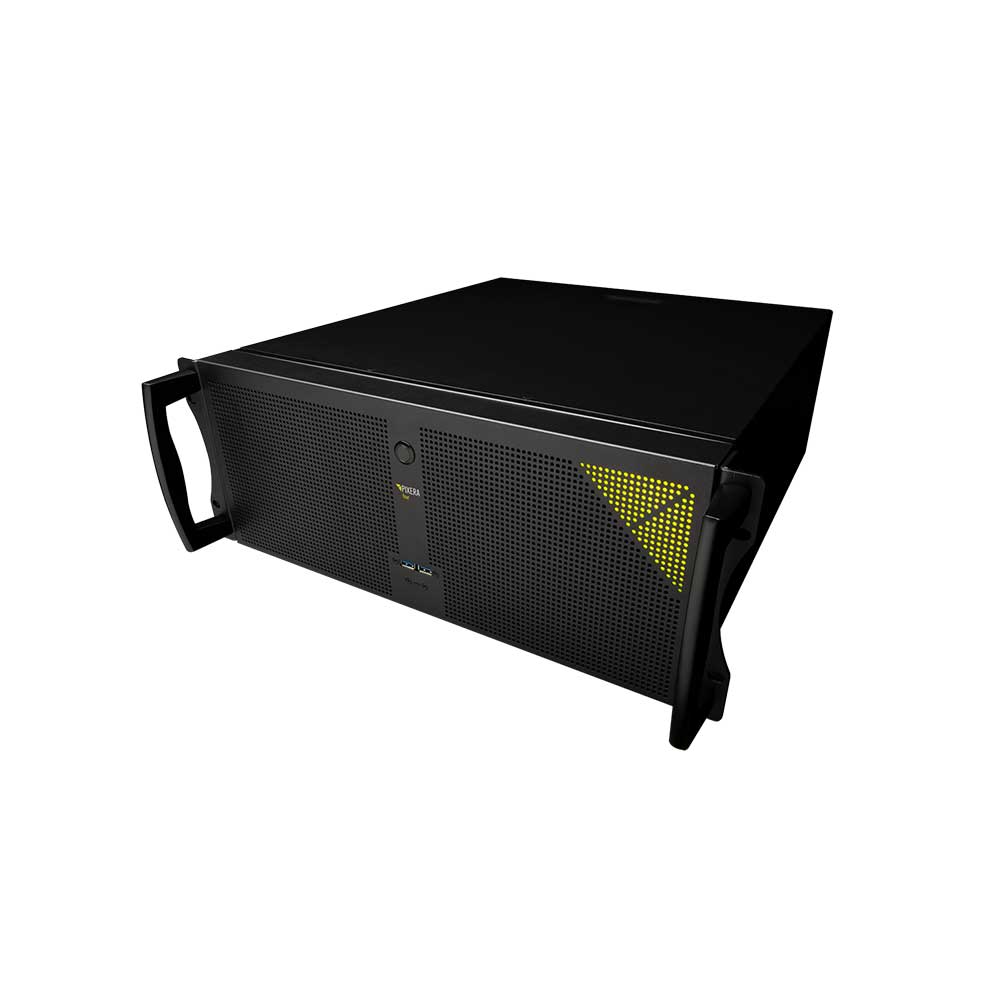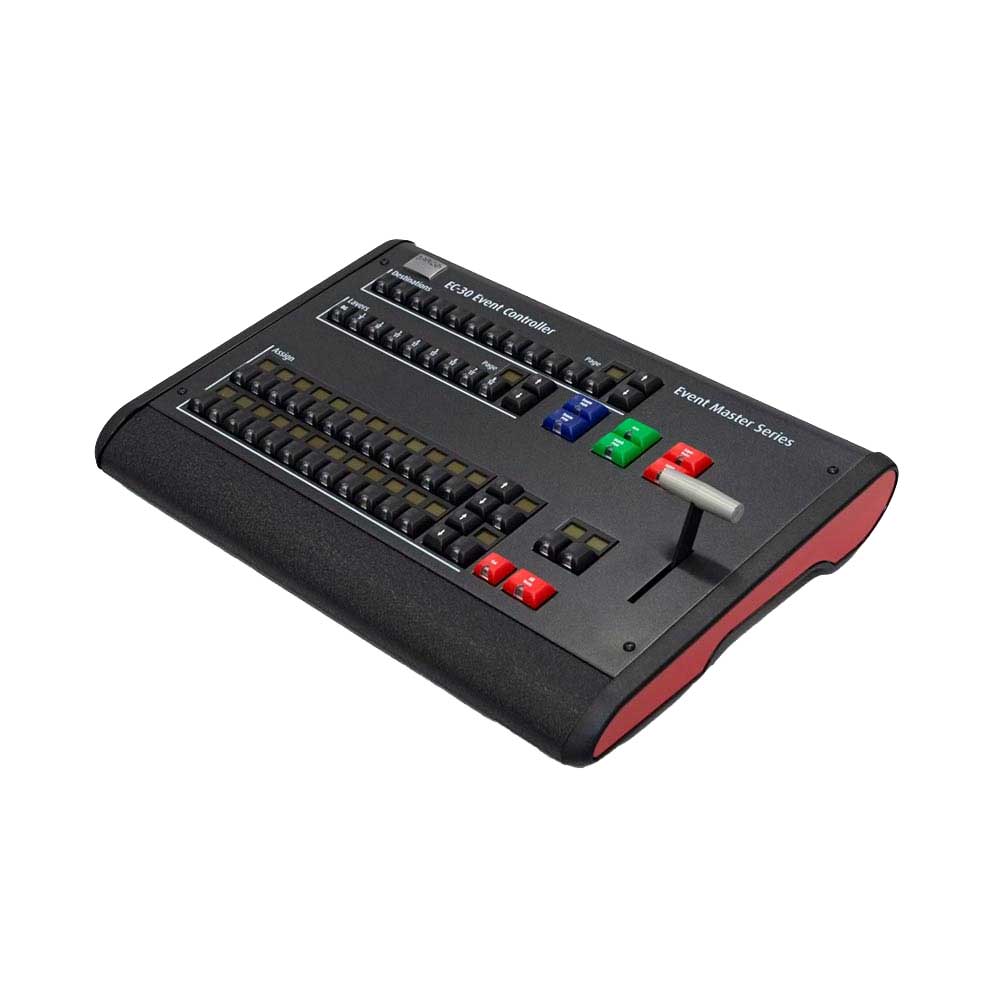Raising the bar for live screen management, the E2 presentation system provides superior image quality, exceptional input and output density, great expandability and durability. Supporting native 4K input and output, it is the first and only screen management system on the market that can manage a 4K projector blend with refresh rates up to 60Hz. A truly versatile system, it offers eight mixable PGM outputs and four scaled Aux Outputs for full show control with a single box.
Native 4K input and output
With native 4K input and output, the E2 provides impressive pixel processing power. Whether native or scaled inputs, two connectors or four, this HDCP-compliant system manages it all. With 28 inputs and 14 outputs (eight PGM, two Multi-viewer and four scaled Aux outputs), the E2 system offers full show control, including eight independent PIP mixers and a dedicated Multiviewer. Thanks to its linkable chassis, it can easily expand beyond these eight outputs without the need for additional external processing and routing to distribute the signals. And as it’s inputs and layers can also be expanded, the E2 will be capable of managing a blended screen with up to 32 4K projectors in the future.
Layers, layers, layers
The E2 offers an extremely flexible layer management system. The E2 starts with a pixel perfect, full resolution, unscaled background layer that is the same resolution as the screen destination. As an unscaled mixing background layer it does not use any of the valuable scaling layers. With up to 32 layers available in HD, the E2 can customize the layer configuration to meet the needs of your application. The layers provide either pip or key effects, and can be configured for HD, Dual Link (2560×1600 or 3840×1200 max), or 4K resolutions. Each destination gets dedicated layers, so you know exactly how many resources are available. The layers can also be configured as single layers with cut transitions, or two of the scalers can be combined to create a mixing layer. Each destination can support a combination of mixers, single layers, pips, keys, and various sizes of layers, all to create a single composited image on the screen.

